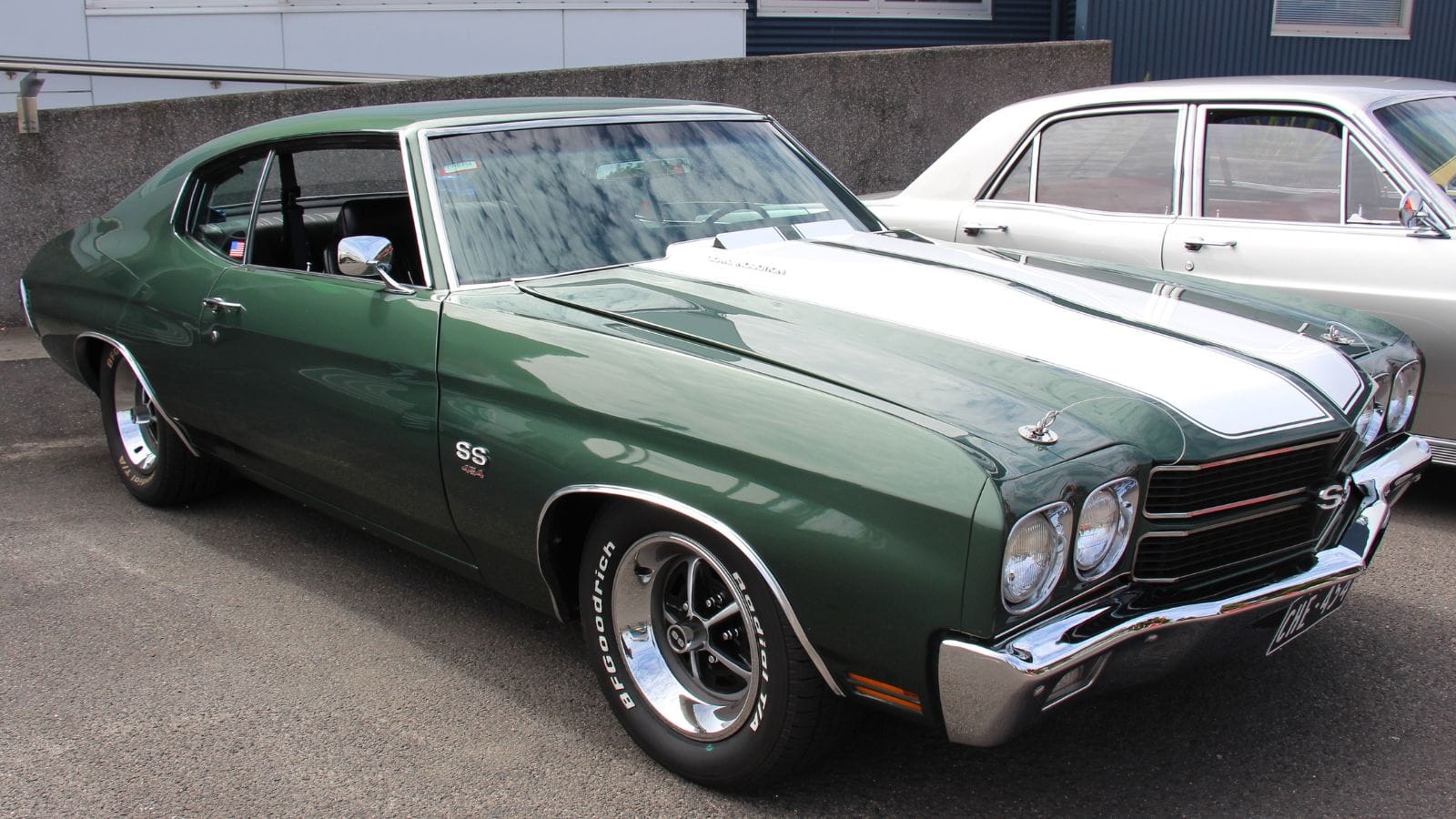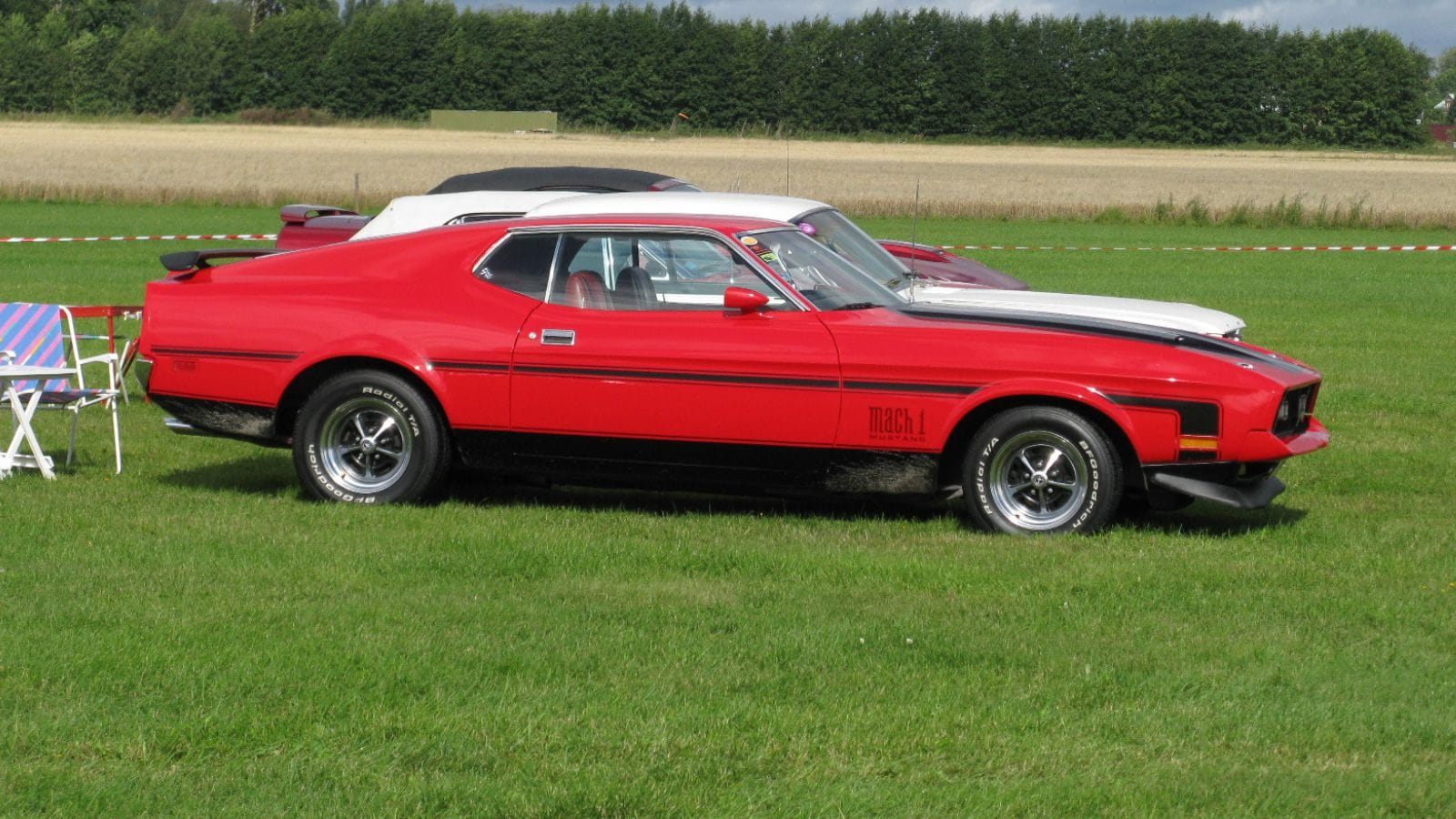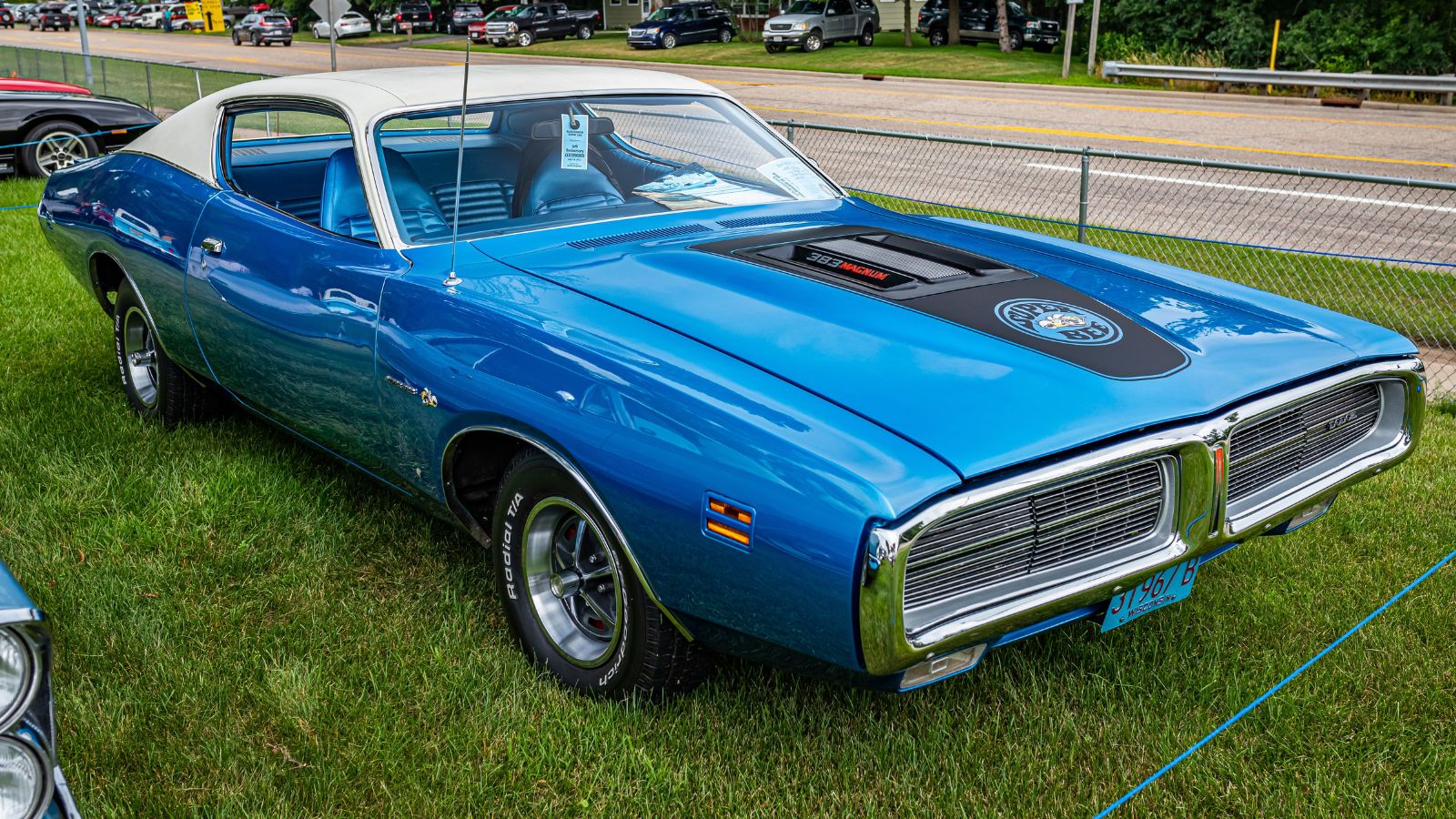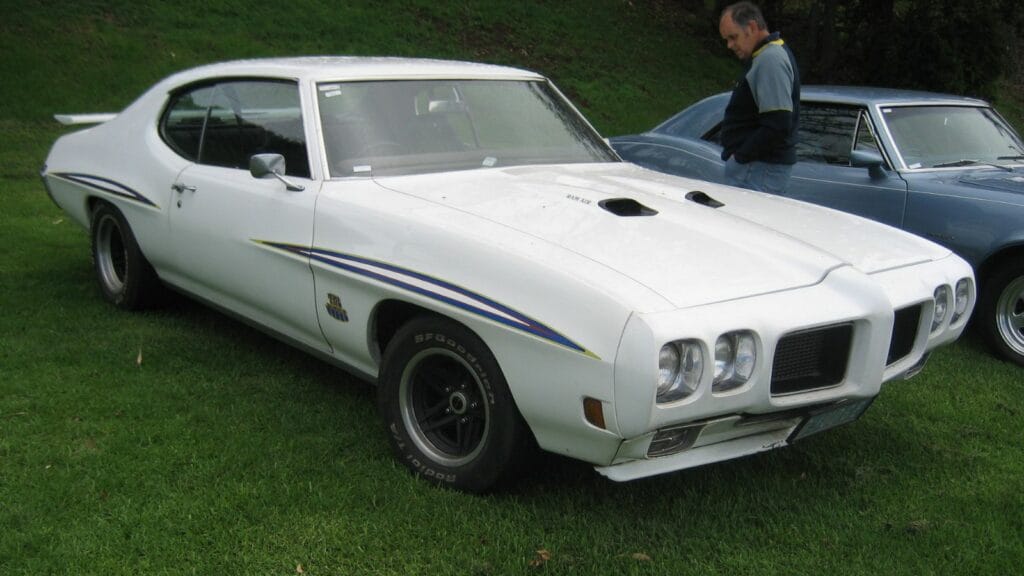The 1970s were a turning point in the history of American performance cars. It was the decade when muscle machines reached their peak in brute power before emissions rules and insurance costs began to cut them down. Back then, cars were raw, mechanical, and dangerous in the best possible way. There were no electronic driver aids, no traction control, and no safety systems to save you when things went wrong. It was all about skill, instinct, and courage. The drivers who mastered these beasts earned every bit of respect they got. Today, most modern drivers, used to computerized precision, would find these cars nearly impossible to control. Here are ten 1970s muscle cars that demanded more than just bravery—they demanded total command.
1970 Chevrolet Chevelle SS 454 LS6

The 1970 Chevelle SS 454 LS6 was the king of the streets. Its 454 cubic inch engine produced a factory-rated 450 horsepower and 500 pound-feet of torque, numbers that were jaw-dropping for the era. In reality, many LS6s made even more. With a four-speed manual and little weight over the rear axle, it was a recipe for tire smoke and chaos. Launching it from a stop required serious finesse, and keeping it straight under full throttle was a workout. The car’s immense power combined with the lack of traction made it thrilling and terrifying in equal measure. Today’s drivers, spoiled by stability control, would have trouble keeping this monster pointed in the right direction.
1970 Plymouth Hemi Cuda

Few cars symbolize pure American muscle like the Hemi Cuda. With its 426 cubic inch Hemi V8 officially rated at 425 horsepower, it was one of the most feared cars of its time. The Hemi was brutally powerful but also temperamental. The engine demanded high-octane fuel and expert tuning to run properly. Its short wheelbase and narrow tires made traction almost nonexistent. On a cold morning or wet pavement, a Hemi Cuda could turn from thrilling to terrifying in seconds. Without modern tires or traction management, this car would easily overwhelm even an experienced driver today.
1970 Dodge Challenger R/T 440 Six Pack

The Dodge Challenger R/T 440 Six Pack was all brawn and very little restraint. Its triple two-barrel carburetors delivered explosive throttle response, while 390 horsepower and 490 pound-feet of torque made it one of the quickest cars on the street. The 440 Six Pack was built for straight-line domination, but the heavy engine and soft suspension made handling tricky. A quick stab of the throttle mid-corner could send the rear end sliding out with little warning. It was a car that rewarded bravery but punished overconfidence. Modern drivers used to computerized grip control would find it a wild and unforgiving experience.
1971 Ford Mustang Mach 1 429 Super Cobra Jet

The 429 Super Cobra Jet was one of Ford’s most intimidating creations. It packed a 7.0-liter big block producing roughly 375 horsepower, though its real-world output was higher. It was designed with drag racing in mind, and every inch of it felt raw and unrefined. The clutch was heavy, the shifter demanded muscle, and the steering was vague at high speeds. When the secondaries opened, it felt like a freight train slamming into the rear bumper. Keeping it under control required both hands, full attention, and nerves of steel.
1970 Buick GSX Stage 1

The Buick GSX Stage 1 was the definition of a sleeper. With a 455 cubic inch engine that made 360 horsepower and an astonishing 510 pound-feet of torque, it could smoke its tires at will. The GSX looked refined, almost gentlemanly, but when you floored it, the car came alive with violence. Despite being more luxurious than most muscle cars, it was just as raw. Its soft suspension and enormous torque made it difficult to keep straight under hard acceleration. Drivers who underestimated it quickly learned that this Buick could bite back hard.
1970 Pontiac GTO Judge Ram Air IV

Pontiac’s GTO Judge was one of the most iconic cars of the era, but the Ram Air IV version was a different animal altogether. Its high-compression 400 cubic inch engine made over 400 horsepower and thrived at high RPMs. That meant it had to be driven aggressively to perform its best. The clutch was stiff, and the engine demanded precise shifting to stay in its powerband. For an inexperienced driver, it could be a nightmare. The Judge wasn’t built for comfort or ease—it was built to dominate. Today’s drivers, used to automatic transmissions and smooth turbo engines, would struggle to handle its rawness.
1971 AMC Javelin AMX 401

The AMC Javelin AMX 401 is one of the most underrated muscle cars ever built. Its 401 cubic inch V8 made 330 horsepower and more than enough torque to turn its rear tires into smoke. The Javelin was fast but also quirky. The steering was heavy, and the suspension was firm, making it twitchy at the limit. It could outrun many bigger-name rivals, but only in the hands of someone who knew how to control its temper. It was a driver’s car in every sense—demanding, unpredictable, and brutally honest.
1971 Dodge Charger Super Bee 440 Six Pack

The Dodge Charger Super Bee 440 Six Pack was the kind of car that scared people just by idling. The triple-carb setup made throttle response instantaneous, and the 440 engine produced enough torque to snap traction in third gear. The car’s size, weight, and drum brakes made it a challenge to stop, and its power came on like a sledgehammer. It was built for the drag strip, not the winding roads, and it made no apologies for it. Anyone expecting a modern driving experience would be shocked by how primitive and untamed it felt.
1973 Pontiac Firebird Trans Am Super Duty 455

By the time the 1970s began winding down, the golden age of muscle was ending, but the Super Duty 455 Firebird was one last heroic effort. Its hand-built engine made around 310 horsepower but delivered torque figures that dwarfed most competitors. Even with emissions controls, it was a brute. The steering was heavy, the brakes were basic, and the chassis flexed under pressure. Driving one fast took serious courage and a lot of skill. It was a car that felt alive—loud, raw, and unfiltered.
1970 Oldsmobile 442 W-30

The Oldsmobile 442 W-30 was often overshadowed by flashier rivals, but it was every bit their equal in performance. Its 455 cubic inch engine delivered 370 horsepower and incredible torque, but its front-heavy design made it difficult to handle. Push it too hard into a corner, and understeer would turn into snap oversteer before you could react. The W-30 looked classy but drove like a wild animal. Modern drivers who expect computers to correct their mistakes would find it a handful even at moderate speeds.
When Cars Were Wild and Drivers Were Brave

The muscle cars of the 1970s were not built for comfort or convenience—they were built to dominate. They demanded real skill, physical effort, and respect from anyone behind the wheel. Without the electronic safety nets of modern cars, they were unforgiving machines that rewarded bravery and punished carelessness. These cars remind us of an era when horsepower was king and every drive was an adventure. Today’s performance cars may be faster and safer, but they lack the raw, unpredictable thrill that made these 1970s beasts truly legendary.
25 Facts About Car Loans That Most Drivers Don’t Realize

Car loans are one of the most common ways people fund car purchases. Like any other kind of loan, car loans can have certain features that can be regarded as an advantage or a disadvantage to the borrower. Understanding all essential facts about car loans and how they work to ensure that you get the best deal for your financial situation is essential. Here are 25 shocking facts about car loans that most drivers don’t realize:
25 Facts About Car Loans That Most Drivers Don’t Realize
